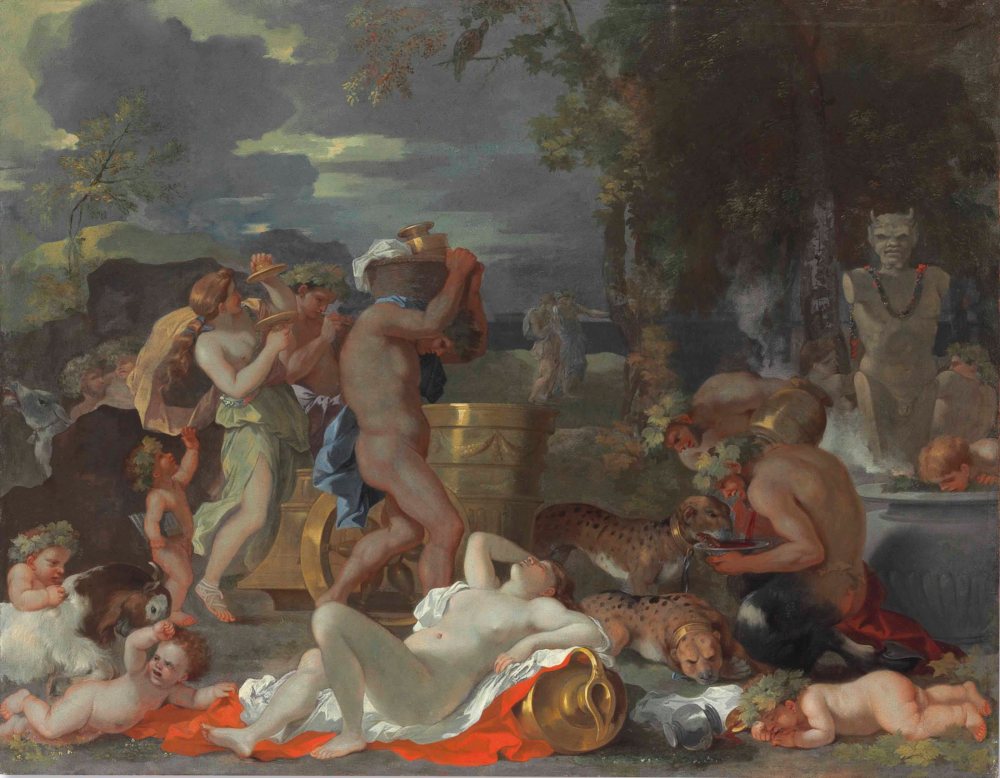
Bacchus and Ariadne on the Island of Naxos, Sébastien Bourdon (Montpellier 1616-1671 Paris)
Following the death of the Minotaur and his escape from the Labyrinth, the Greek hero Theseus unceremoniously abandoned Ariadne, daughter the Cretan king, Minos, on the Greek island of Naxos. Many variations of the myth exist; in most, Ariadne is discovered soon after her beloved’s betrayal by Bacchus, god of wine, who fell in love with and wedded her.
In Sébastian Bourdon’s rendition, the newly married protagonists are relegated to the rear of the composition so the artist can focus instead on the drunken revelers in the foreground. Seemingly in the early stages of the celebrations, the maenads are not yet in a state of ecstatic frenzy, nor have they paired off with the satyrs or their male counterparts. Nevertheless, Bacchus’ companion Silenus can already be seen at left, intoxicated and primed to accost the sleeping nymph Lotis who will be saved from his licentiousness by the braying of a donkey.
Until recently attributed to Nicolas Poussin, this work is surely among the most ‘Poussin-esque’ of Bourdon’s oeuvre. Several of the figures derive from Poussin’s Midas Giving Thanks to Bacchus (Alte Pinakothek, Munich), which dates to c. 1630. The figure of Lotis in the foreground of the present painting appears in reverse in the Munich picture; the sleeping putto (lower right), the piper (middle ground, on the left) and the black-and-white goat can also all be traced to the same work. A further painting by Poussin, The Nurture of Bacchus (Louvre, Paris), includes the motif of the sleeping nymph, with minor variations in the pose, and was also almost certainly the basis for the two satyrs who offer wine to the Indian cheetahs.
(Source: Christie’s)